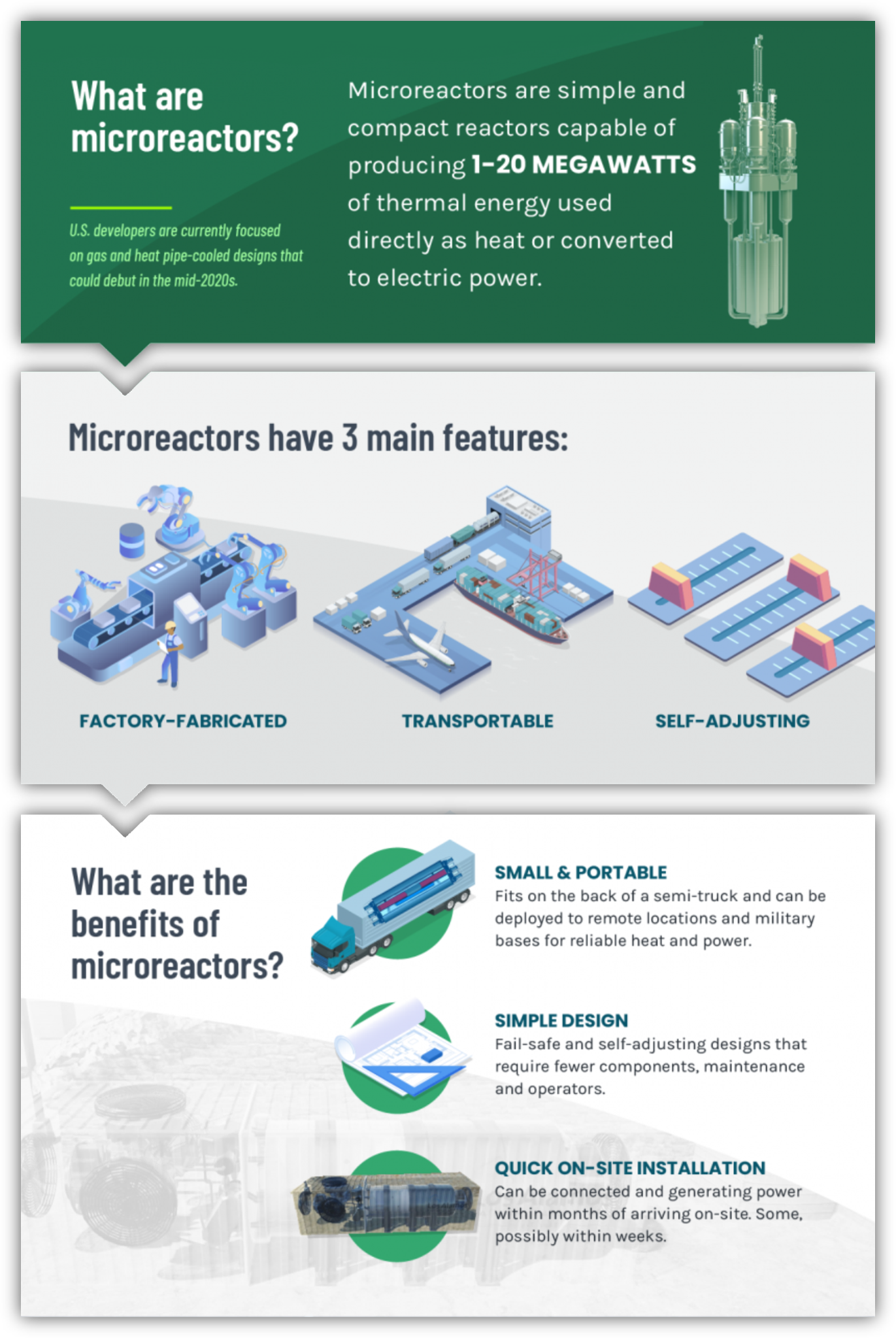Emerging Technology – Microreactors
Nuclear is getting smaller … and it’s opening up some
big opportunities for the industry.
The new generation of advanced microreactors can produce between 1 and 20 megawatts of thermal energy that could be used directly as heat or converted to electric power. Generating clean and reliable electricity for commercial use or for non-electric applications such as district heating, water desalination and hydrogen fuel production, microreactors are a highly adaptable and portable alternative to traditional nuclear reactors.
Important Market Developments:
- INL and the National Reactor Innovation Center (NRIC) are enabling developers by providing technical resources, capabilities and a demonstration site
- Technology advancements and experience provide improved microreactor designs
- The federal government is supporting development through funding and legislation
- The U.S. advanced reactor industry is developing several microreactor concepts

Other Benefits:
- Microreactors can be used in emergency response scenarios to help restore power to areas hit
by natural disasters - Microreactors have characteristics that enable rapid deployment and removal – Easily scalable, they can be “right-sized” to fit most locations
- Microreactors can supplement microgrids and bare integrable with renewable energies
- Designed for a longer core life, microreactors can operate for up to 15 years

Demystifying Nuclear Energy
Myth & Truth
Myth # 1: Nuclear energy is not safe.
Truth: Nuclear energy is as safe or safer than any other form of energy available. No member of the public has ever been injured or killed in the entire 50-year history of commercial nuclear power in the U.S.
Myth # 2: A nuclear reactor can explode like a nuclear bomb.
Truth: It is impossible for a reactor to explode like a nuclear weapon; these weapons contain very special materials in very particular configurations, neither of which are present in a nuclear reactor.
Myth # 3: There is no solution for huge amounts of nuclear waste.
Truth: The U.S. National Academy of Sciences and the equivalent scientific advisory panels in every major country support geological disposal of such wastes as the preferred safe method for their ultimate disposal
Myth # 4: An American “Chernobyl” would kill thousands of people.
Truth: A Chernobyl-type accident could not have happened outside of the Soviet Union because this type of reactor was never built or operated here.
Myth # 5: Americans get most of their yearly radiation dose from nuclear power plants.
Truth: We are surrounded by naturally occurring radiation. Only 0.005% of the average American’s yearly radiation dose comes from nuclear power; 100 times less than we get from coal, 200 times less than a cross-country flight, and about the same as eating 1 banana per year

